Composite of the 2-fold minimax eversion
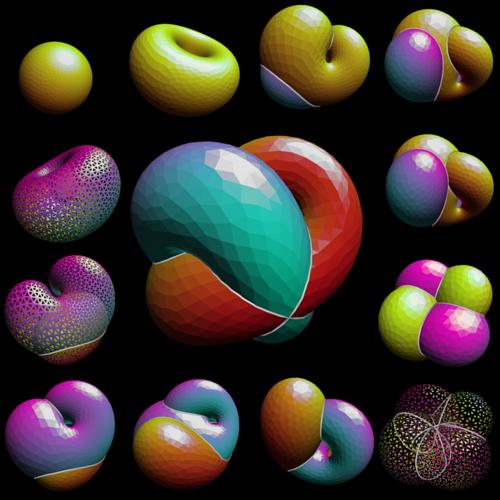
Clockwise from upper left, we see stages in the eversion. Images on the right show the creation of triple points (top pair) and passage through the quadruple point at the halfway stage (bottom pair). The large middle image shows the halfway model from the other end, where there is a point of double tangency.
Composite of the 3-fold minimax eversion
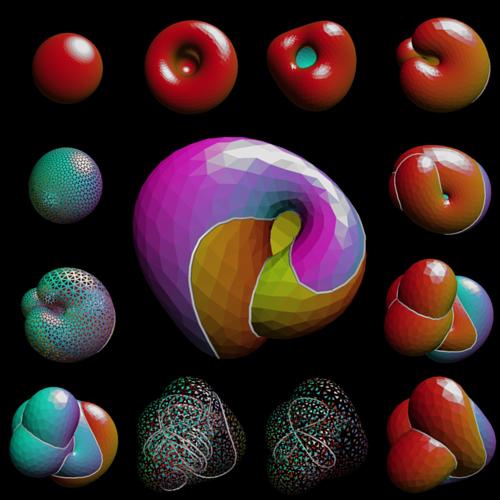
Clockwise from upper left, we see stages in the eversion. We can see how three fingers grow into each other. The two views at the bottom with gaps between the triangles show the halfway model (Boy's surface) and the way it breaks apart into its double cover. The large middle image is close to the halfway stage.
Kusner's minimal surface
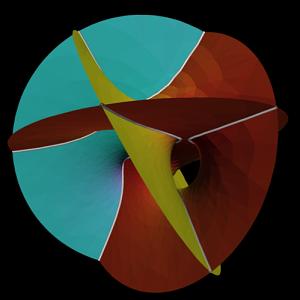
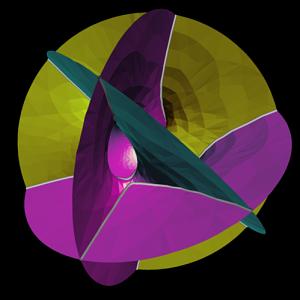
These images show a minimal surface with four flat ends. Applying a Möbius transformation (along the z-axis) to this surface gives the halfway model for the 2-fold eversion; the point at infinity becomes the quadruple point.
The minimal surface inverted in the unit sphere
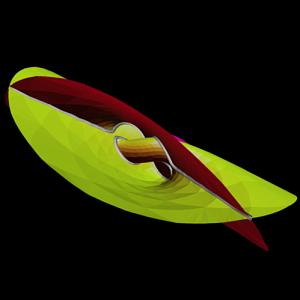
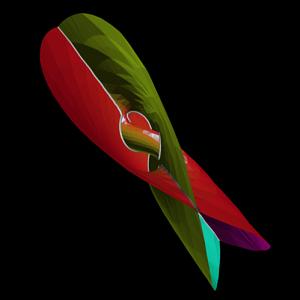

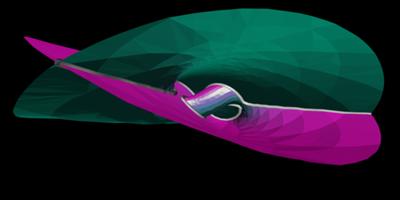
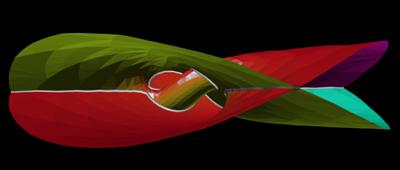




These many images show the inversion of Kusner's minimal surface which sends the isthmus point (the double tangent point) to infinity and leaves the quadruple point at the origin. This surface has two wavy ends with cos(2t) behavior.
Flythrough

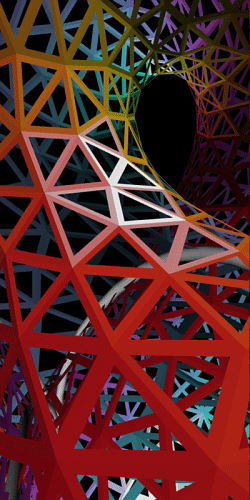
These images are from the flythrough scene, showing interior views of the 2-fold eversion around the time the triple points appear.
Transparent eversions

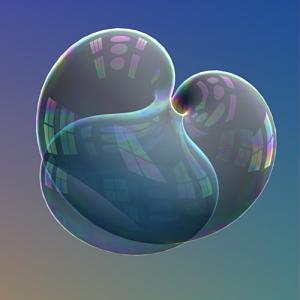
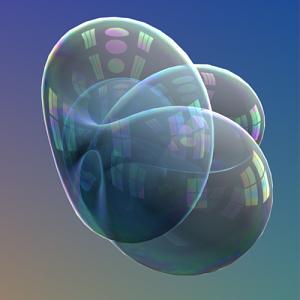
These images show the 2-fold eversion in an early "gastrula" stage, at a stage between the creation of the first and second double curves, and finally almost at the halfway stage.
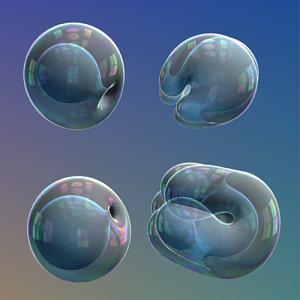
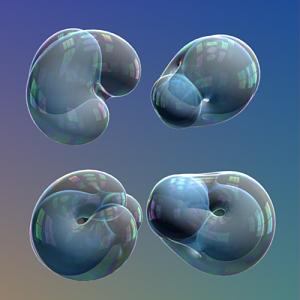

These images all show the 2-, 3-, 4-, and 5-fold eversions in the upper left, lower left, upper right, and lower right cornerse, respectively. First we see an early stage, with p fingers growing in the p-fold everion. Next we see an intermediate stage when the fingers have mostly overlapped. Finally we see the four halfway models. For p odd, these are doubly covered projective planes.
The "ear"
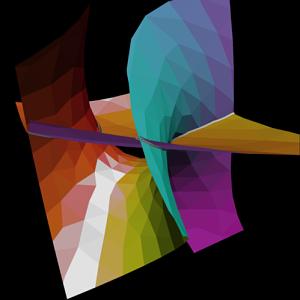
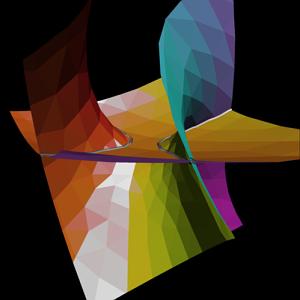
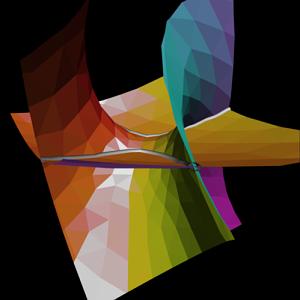

At the halfway stage in the 2-fold eversion, five isthmus or reconnection events happen at once, where double-tangent points break apart one way or the other. One of these is along the symmetry axis, opposite the quadruple point. The other four are in the "ears" of the Morin surface, two of which open as the other two close. These closeups show one ear closing.
The 4-fold eversion
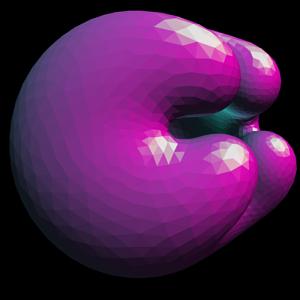
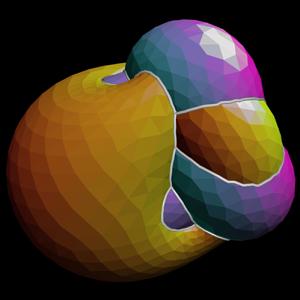

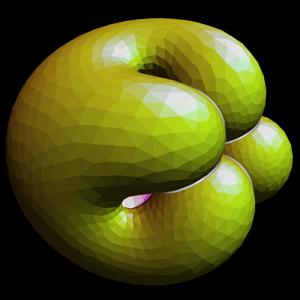
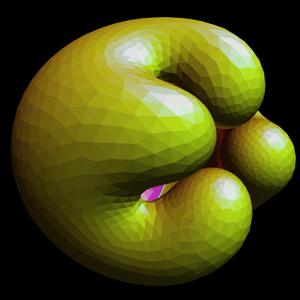
The 4-fold eversion has four fingers at an early stage. Later, they overlap. At the halfway stage, we have an octuple point for an instant. The second half of the eversion is like the first with time reversed and the other side of the surface showing.
The 3-fold eversion

The halfway model for the 3-fold eversion the double cover of a projective plane, a Boy's surface which minimizes Willmore bending energy. The fact that two oppositely oriented sheets overlap means the computer graphics system randomly picks which color to draw.
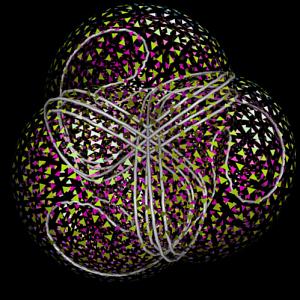
Just after the halfway stage, the propellor-shaped double locus of Boy's surface breaks apart into a four-fold cover (since the two sheets of surface have pulled apart). Where Boy's surface had a triple point, we see a small growing cube in the double locus.
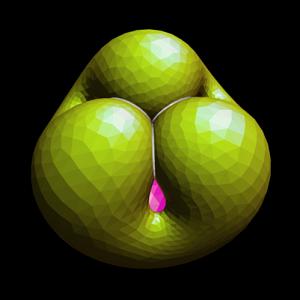
Near the end of the 3-fold eversion, three fingers retract to form a gastrula which then moves to a round sphere.
The triple point

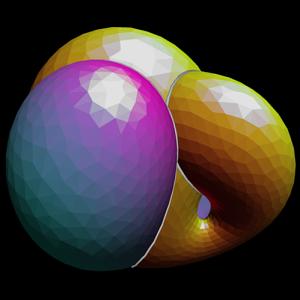

These three images show the 2-fold eversion near the time pairs of triple points are created, in a close up, a solid view, and a gapped view highlighting the double-locus.
Halfway model


Near the halfway stage of the 2-fold eversion, the double locus is quite elaborate, with a small tetrahedron growing out of what is the quadruple point at the halfway stage. A cutaway view of the halfway model is quite elaborate.
Interior views
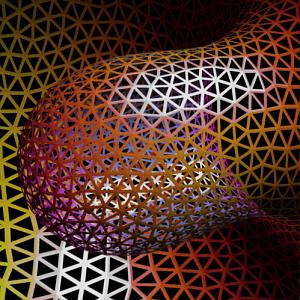
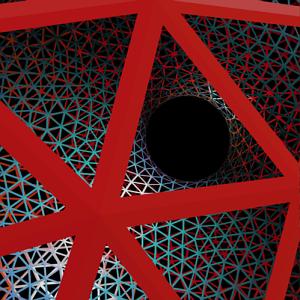
These two views show the gastrula stage of the 2-fold eversion from inside---the second looks almost along the symmetry axis.
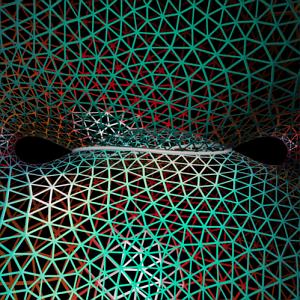

These pictures view the 2-fold eversion from inside, looking up along the symmetry axis, with a wide-angle lens. First we see the stage just after creation of the second double curve. Then we see a stage shortly after the creation of two pairs of triple points (towards the upper right and lower left).
Miscellany
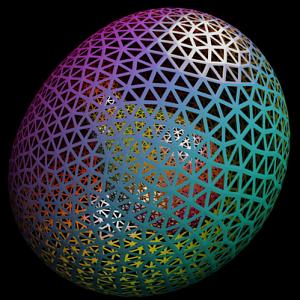


These images show the 2-fold eversion, first in the gastrula stage, then between the times the first and second double curves appear, and finally at the halfway model.